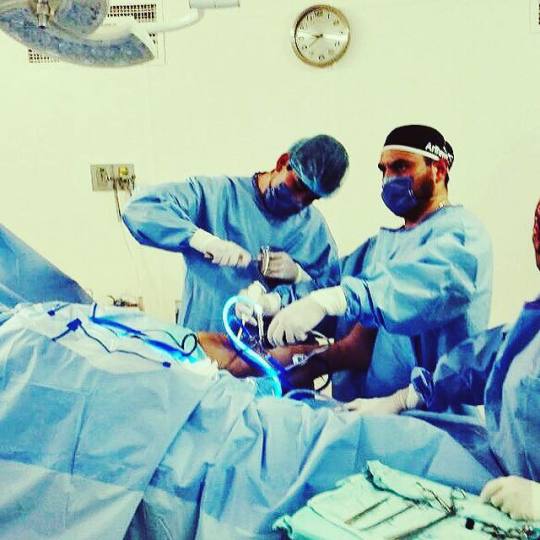A Systematic Review of Tennis Elbow Surgery: Open Versus Arthroscopic Versus Percutaneous Release of the Common Extensor Origin
Fuente
Este artículo es originalmente publicado en:
Este artículo es originalmente publicado en:
De:
Arthroscopy. 2017 Apr 12. pii: S0749-8063(17)30116-0. doi: 10.1016/j.arthro.2017.01.042. [Epub ahead of print]
Todos los derechos reservados para:
Copyright © 2017 Arthroscopy Association of North America. Published by Elsevier Inc. All rights reserved.
Abstract
PURPOSE:
To compare complications, function, pain, and patient satisfaction after conventional open, percutaneous, or arthroscopic release of the extensor origin for the treatment of lateral epicondylitis.
CONCLUSIONS:
Functional outcomes of open and arthroscopic releases may be superior to those of percutaneous release. In addition, patients may report less pain with arthroscopic and percutaneous techniques. Although the risk of complications is similar regardless of technique, patients may be counseled that their risk of infectious complications may be slightly higher with open releases. However, it is important to note that this statistical difference may not necessarily portend noticeable clinical differences.
Resumen
PROPÓSITO:
Comparar las complicaciones, la función, el dolor y la satisfacción del paciente después de la liberación convencional abierta, percutánea o artroscópica del origen extensor para el tratamiento de la epicondilitis lateral.
Comparar las complicaciones, la función, el dolor y la satisfacción del paciente después de la liberación convencional abierta, percutánea o artroscópica del origen extensor para el tratamiento de la epicondilitis lateral.
CONCLUSIONES:
Los resultados funcionales de liberaciones abiertas y artroscópicas pueden ser superiores a los de la liberación percutánea. Además, los pacientes pueden reportar menos dolor con técnicas artroscópicas y percutáneas. Aunque el riesgo de complicaciones es similar independientemente de la técnica, se puede aconsejar a los pacientes que su riesgo de complicaciones infecciosas puede ser ligeramente mayor con las liberaciones abiertas. Sin embargo, es importante señalar que esta diferencia estadística no necesariamente presagia diferencias clínicas notables.
Los resultados funcionales de liberaciones abiertas y artroscópicas pueden ser superiores a los de la liberación percutánea. Además, los pacientes pueden reportar menos dolor con técnicas artroscópicas y percutáneas. Aunque el riesgo de complicaciones es similar independientemente de la técnica, se puede aconsejar a los pacientes que su riesgo de complicaciones infecciosas puede ser ligeramente mayor con las liberaciones abiertas. Sin embargo, es importante señalar que esta diferencia estadística no necesariamente presagia diferencias clínicas notables.
LEVEL OF EVIDENCE:
Level IV, systematic review of Level III and IV evidence.
Copyright © 2017 Arthroscopy Association of North America. Published by Elsevier Inc. All rights reserved.
PMID: 28412059 DOI:


